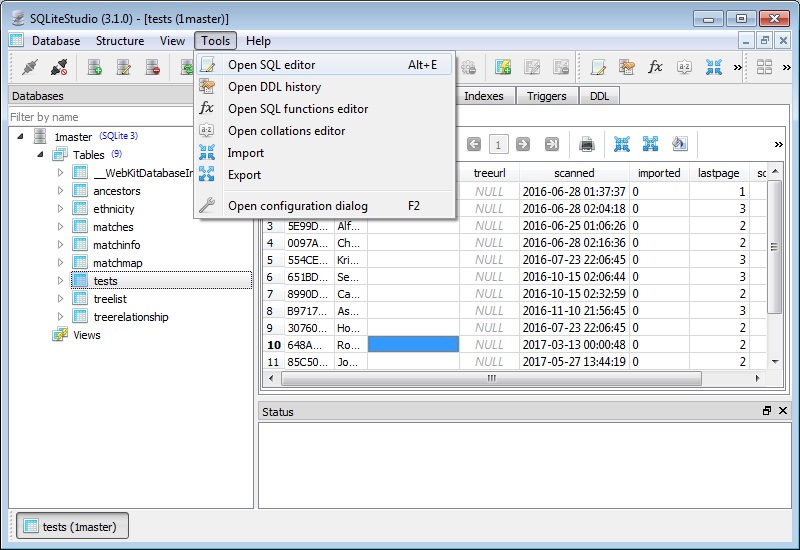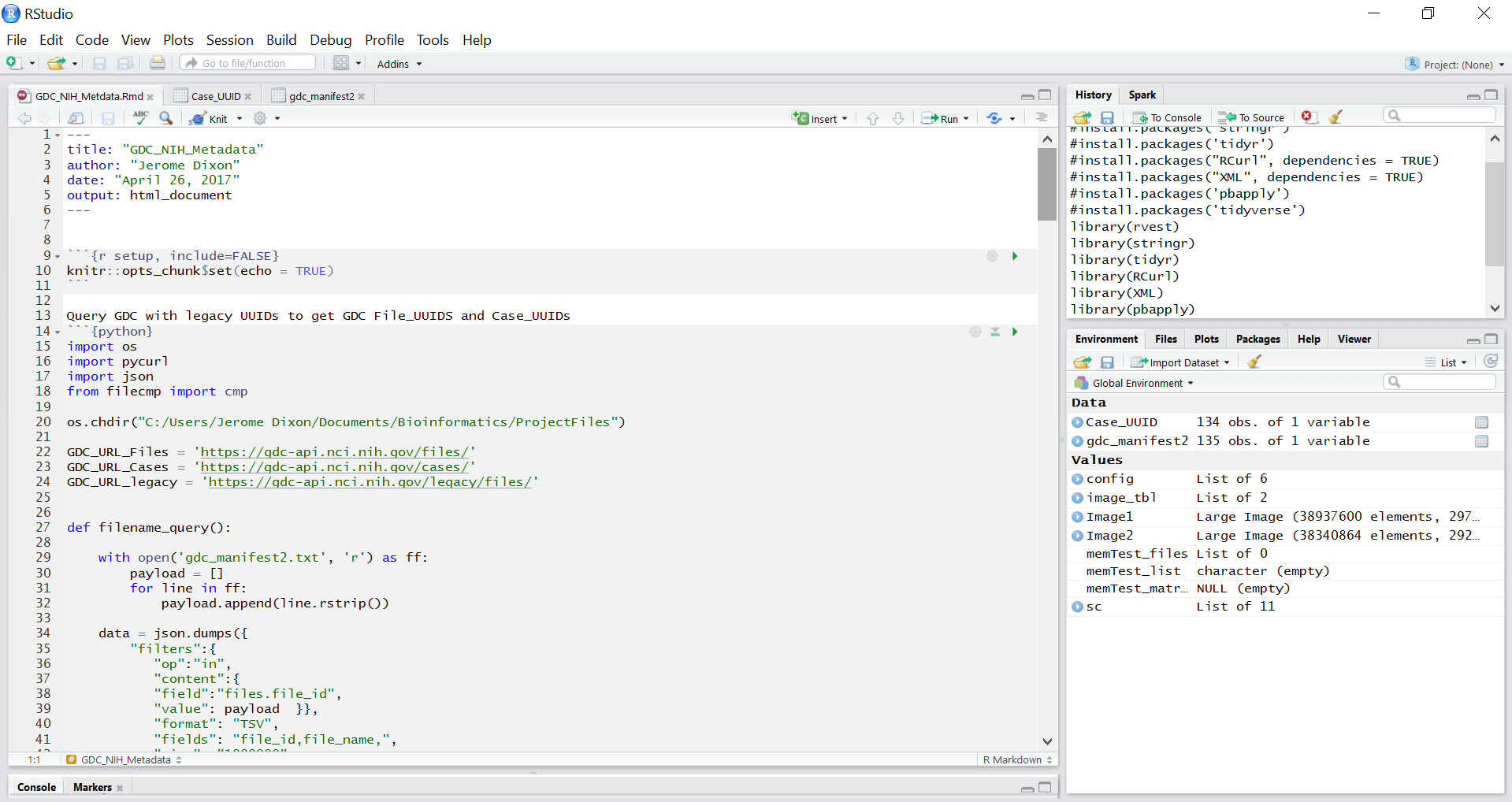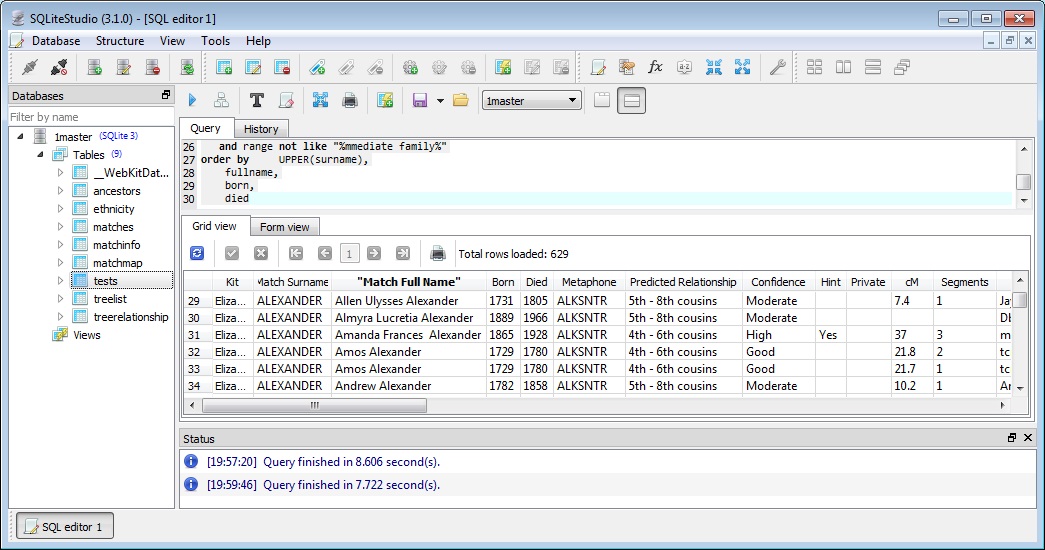

- #RUNNING QUERY IN SQLPRO FOR SQLITE FOR MAC#
- #RUNNING QUERY IN SQLPRO FOR SQLITE UPDATE#
- #RUNNING QUERY IN SQLPRO FOR SQLITE PRO#
- #RUNNING QUERY IN SQLPRO FOR SQLITE CODE#
- #RUNNING QUERY IN SQLPRO FOR SQLITE SERIES#
I want to emphasis that, this is just an experiment and I would not recommend to use this in production.Going Fast with SQLite and Python.

It is SQLite compiled to WebAssembly and can be used via JavaScript and I was able to run it successfully! For the impatient ones, here is the demo and here is the source code. Furthermore, if a BEFORE trigger modifies or deletes a row, then it is undefined.
#RUNNING QUERY IN SQLPRO FOR SQLITE UPDATE#
If a BEFORE UPDATE or BEFORE DELETE trigger modifies or deletes a row that was to have been updated or deleted, then the result of the subsequent update or delete operation is undefined. Blob is similar to the varbinary type in SQL Server. SQLite recognizes Text, Numeric, Integer, Real, and Blob affinities. SQLite does allow datatypes to be specified if desired, but (except for integer primary key columns), these are mere type affinities and SQLite will still allow any type of data to be inserted. Triggers are deleted when the table that they are associated with. Each trigger must have a name that is unique to the database.
#RUNNING QUERY IN SQLPRO FOR SQLITE SERIES#
sqlite> alter table employee add column updatedon date Next, create a file that has the trigger definition.What is a trigger? In SQL, a trigger is a sql statement or series of sql statements that are executed automatically in response to a specified event such as the update of or creation or deletion of a table or record. For this example, first add a date column called "updatedon" on employee table. The sqlite database lives at /data/sqlite.db in your deployed application.The SQLite core engine is a relatively tiny application that provides you more or less standard ANSI-SQL 92 syntax so with a basic abstraction layer, you can treat this as you would any other relational database.

#RUNNING QUERY IN SQLPRO FOR SQLITE PRO#
MySQL Workbench ( recommended for win that i learnt in), Navicat for MySQL, Sequel Pro (for Mac), SQL Maestro, SQL Wave etc, There are many more as well.Īlso if you consider the paid options like MS SQL server and Oracle.MS SQL Server comes with SQL Server Management Studio and Oracle comes with its own User interface as well.Every commit to your main branch will trigger a deployment to your production environment, and every commit to your dev branch will trigger a deployment to your staging environment.

there are many open source UI tools, these tools will directly link with the database, you can write your PL SQL code/queries and execute them directly on MySQL server.
#RUNNING QUERY IN SQLPRO FOR SQLITE FOR MAC#
Editors like Notepad++ or sublime or many other used for windows and TextMate for Mac etcĪ more efficient way will be installing a User Interface for MySQL. There are many ways to write it one of the simplest ways is you can write your code/queries in any text editor and save it as. It all comes down to personal preference, In my personal opinion I work with MS SQL for the most part and I think it is used in most people's jobs too. Look also into NoSQL databases such asMongoDB & indexed stores like Redis For example, a database backup is not done the same way on postgresql & on mysql. If you care about a DBA or Sysadmin point of view, details are specific (and even the API is specific some libraries - e.g.
#RUNNING QUERY IN SQLPRO FOR SQLITE CODE#
And both are free software, you could study their source code or build their latest version or even contribute to them. They are packaged in most Linux distributions (so installing them is easy). Then you might try PostGreSQL andMySQL (or MariaDB). It has several DBMS implementations (also, most servers are running Linux).įrom a programmer's point of view,sqlite is the easiest to play with (yon don't need to setup a server, it is a library) even if it is not entirely SQL compliant. Do you want to learn from theprogrammer's point of view, or the database & system administrator point of view? It depends upon your prior skills and goals.


 0 kommentar(er)
0 kommentar(er)
